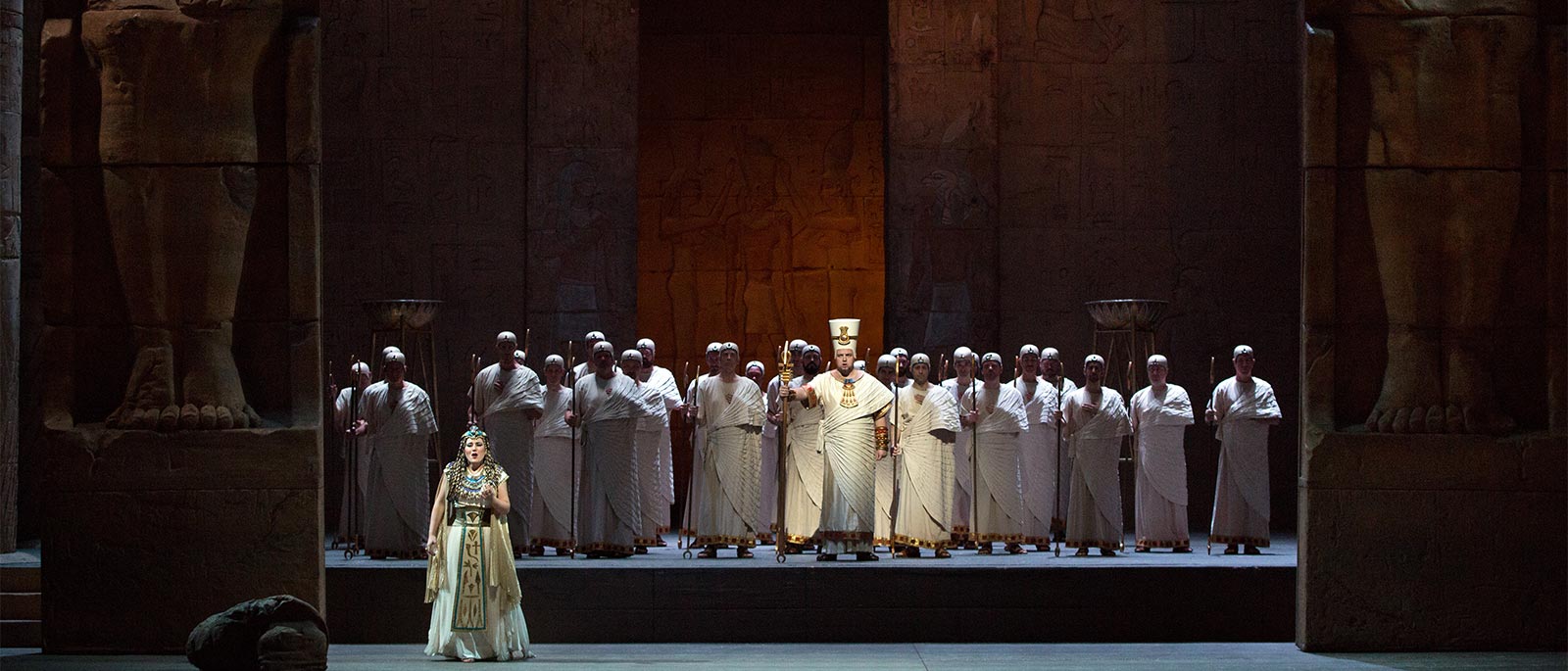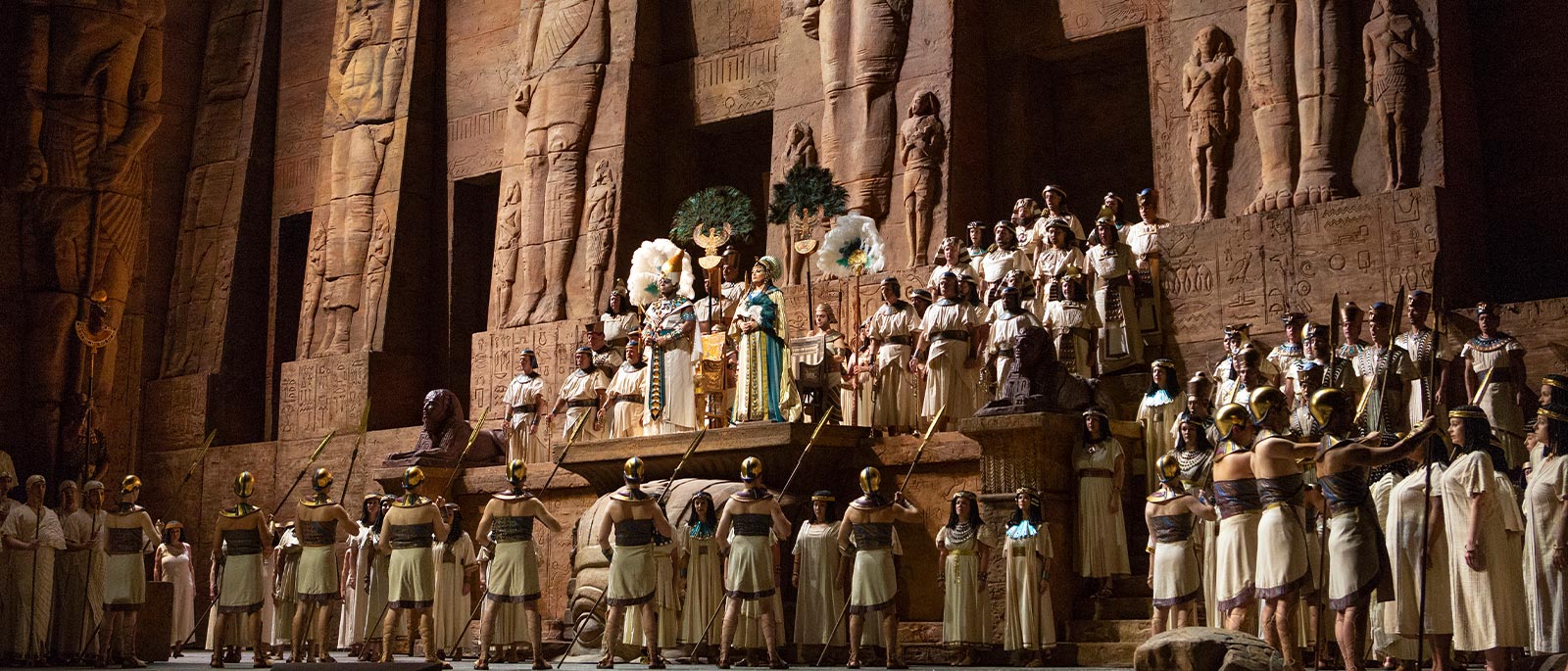
Giuseppe Verdi
Aida
This production ran: Dec 2 - May 18
This production is in the past.
Overview
The mighty walls and towering monuments of ancient Egypt once again fill the Met stage, as Verdi’s great spectacle returns. Sopranos Michelle Bradley, Angela Meade, and Leah Crocetto share the title role, a captive Ethiopian princess torn between love and country. Mezzo-soprano Olesya Petrova is Aida’s implacable Egyptian counterpart, Amneris, with tenors Brian Jagde and Jorge de León as the warrior Radamès, the object of both of their affections. Baritones George Gagnidze, Quinn Kelsey, and Luca Salsi portray Aida’s father, Amonasro, and bass-baritone Christian Van Horn is the iron-fisted priest Ramfis. Maestro Paolo Carignani conducts.
Production a gift of Mrs. Donald D. Harrington
Revival a gift of C. Graham Berwind, III
Languages
Languages sung in Aida
Sung In
Italian
Titles
Title languages displayed for Aida
Met Titles In
- English
- German
- Spanish
- Italian
Timeline
Timeline for the show, Aida
Estimated Run Time
3 hrs 50 mins
-
House Opens
-
Act I
40 mins
-
Intermission
35 mins
-
Act II
45 mins
-
Intermission
40 mins
-
Acts III and IV
70 mins
-
Opera Ends
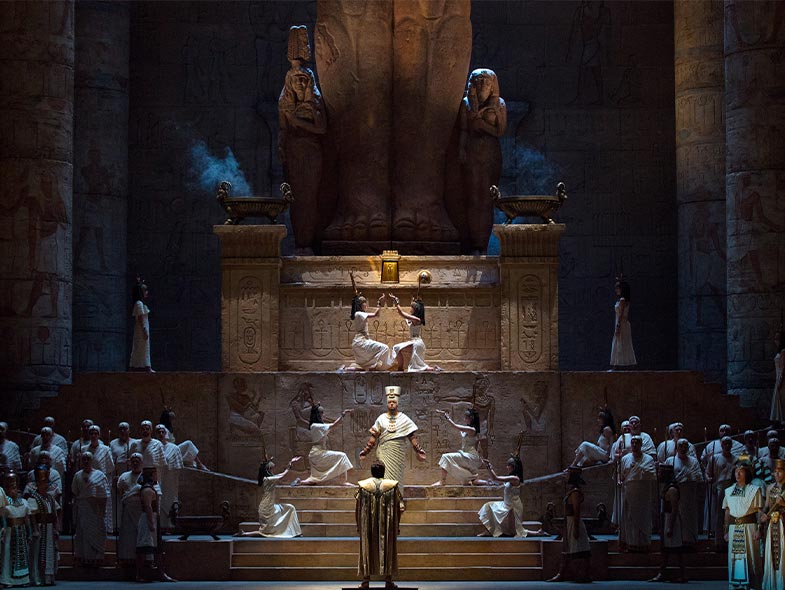
World premiere: Khedivial Opera House, Cairo, 1871. This grandest of grand operas features an epic backdrop for what is in essence an intimate love story. Set in ancient Egypt and packed with magnificent choruses, complex ensembles, and elaborate ballets, Aida never loses sight of its three protagonists. Few operas have matched Aida in its exploration of the conflict of private emotion and public duty, and perhaps no other has remained to the present day so unanimously appreciated by audiences and critics alike.
Creators
In a remarkable career spanning six decades in the theater, Giuseppe Verdi (1813–1901) composed 26 operas, at least half of which are at the core of today’s repertoire. His role in Italy’s cultural and political development has made him an icon in his native country. The story of Aida is thought to be the creation of Auguste Mariette (1821–81), an extraordinary French archaeologist who was the founder of the Egyptian Museum of Cairo. Camille du Locle (1832–1903), who collaborated on the scenario with Mariette and suggested the story to Verdi, had worked with the composer on the libretto of Don Carlos. Aida’s librettist, Antonio Ghislanzoni (1824–93), was a novelist and poet as well as the creator of some 85 libretti.
PRODUCTION
Sonja Frisell
SET DESIGNER
Gianni Quaranta
COSTUME DESIGNER
Dada Saligeri
LIGHTING DESIGNER
Gil Wechsler
CHOREOGRAPHER
Alexei Ratmansky
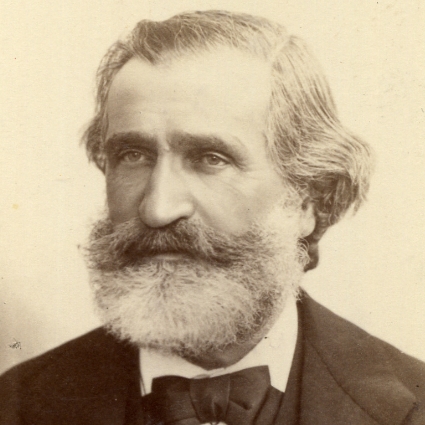
Composer
Giuseppe Verdi
Setting
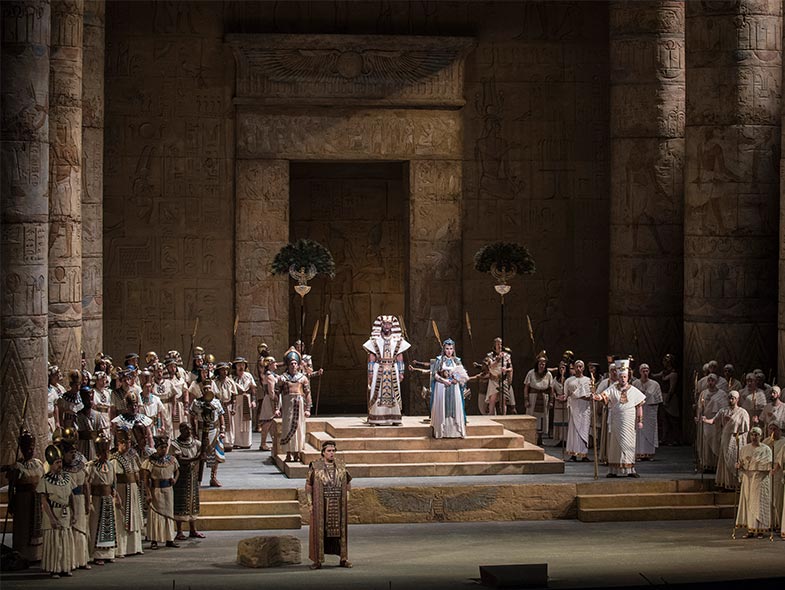
The libretto indicates merely that the opera takes place in “ancient Egypt, in the time of the pharaohs.” This may sound vague, but it was a clear direction to approach the drama as myth rather than anthropology or history.
Articles
Music
The score of Aida is a sophisticated example of Italian Romanticism, imbued with a convincingly mysterious and exotic hue. Making no claims to authenticity, Verdi created a unique musical palette for this opera. The grandeur of the subject is aptly conveyed with huge patriotic choruses, most notably the unforgettable Triumphal Scene in Act II. These public moments often serve as frames for the solos of the leading tenor and soprano: his soaring “Celeste Aida” right at the beginning of Act I, her impassioned “Ritorna vincitor!” that follows, and her great internal journey, “Qui Radamès verrà! … O patria mia” in Act III.
Videos
